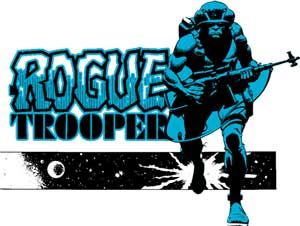Masters of CG: Avatar's Jon Landau on the future of 3D
Currently producing Avatar 2, movie veteran Jon Landau reckons the industry is doing stereoscopic 3D all wrong.
This article is brought to you in association with Masters of CG, a new competition that offers the chance to work with one of 2000AD's most iconic characters. There are big prizes to be won, so enter today!
When it comes to 3D, Jon Landau is a man you listen to. After he teamed up with James Cameron in 2009 to produce Avatar, he didn't just help create the biggest grossing movie of all time - overtaking another of his movies, Titanic. He changed the world's opinion of stereoscopic 3D forever.
No longer would people see the idea of watching a movie through a special pair of glasses as just a flash-in-the-pan gimmick, as it had been in the 1950s. Avatar was serious moviemaking - and serious box office. And it was clear that stereoscopic 3D was going to be an integral part of Hollywood for a long time to come.
Now 54, Landau is working with Cameron on Avatar 2, 3 and 4 due to be released December 2016, 2017 and 2018 respectively. And, as he revealed in a talk at FMX in Germany, the sequels promise to be just as technologically groundbreaking as the originals.
Faster frame rates
For one, HFR (high framerate) will be taken a step further on Avatar 2, 3, and 4. Until now HFR's greatest advocate has been Peter Jackson, whose two Hobbit movies were made in 48fps to mixed reviews.
Now 60fps is being considered for the Avatar sequels - although another idea the team is toying with is using varying framerates, depending on the demands on each scene, said Landau.

At the event he also discussed the development of the 'Simulcam', which will allow Cameron to light his virtual scenes during shooting.
This means, he explained, that "Cameron will be able to direct lighting and shading closer to the final look in real time". He showed us some recent tests, and when compared to tests for the first film, the improvements in detail and lighting were pretty substantial.
Back to Pandora
Although early rumours suggested the Avatar sequels would take the action to new worlds, Landau confirmed that they will in fact return to Pandora and explore it in more detail, including underwater scenes. And, perhaps least surprisingly, that exploration will take place in stereo 3D. Although when I chat to him, Landau acknowledges problems remain with creating a good experience for the 3D glasses-wearing public.
"People are looking at 3D the wrong way, either in the computer or in terms of display technology," he argues. Firstly, the glasses themselves are an issue, he says, as the light through the polarisers isn't natural and people simply aren't used to it.
"There is a breaking of the suspension of disbelief, as well, when an object moves out of the screen," he adds. "Too much and it reminds the viewer that they are experiencing the story in a slightly unnatural way."
Changes to the pipeline
So how do we improve things? One thing we can do is change the way 3D artists create the scenes in the first place, says Landau. "In modelling, we make too many steps and could easily reduce the workload by simply bypassing the 2D stage.
"Artists model 3D objects in a 2D workspace," he points out. "Why should that be the case when the technology exists to create fully in 3D, with inputs that allow translation and manipulation in so many axis?"

The way Landau puts it seems both radical and common sense. "You want to be able to see the depth on the scene you're working," he reasons.
"Working at a computer it's easy to do, with a single viewer and a fixed distance. You don't need glasses to work in 3D on a 3D screen and that's where I think people should be going. Anybody who is creating something that is intended to be built in 3D should be designing it in 3D. It only makes sense to do it that way".
Breaking bad habits
Currently 3D artists tend to work from technical drawings and concept art, but this should all change, Landau argues. "Habit tells us we can't start from 3D. But with the tools available, you can work in 3D just as easily.
"For example, if you're modelling a boat, don't start from a conceptual drawing. Build it in 3D and then, you know what, you can run a sim on the hull, to see how hydro-dynamic it is. That isn't something you could do ten years ago, without visiting a lab, but now you can do it in your home."
For Landau, the future of VFX is fully 3D - and we now have the skills and tools to work effectively and efficiently. So is it time for the movie industry to change its mindset and truly embrace the possibilities of 3D?
Win a trip to SIGGRAPH!

Masters of CG is an exciting new competition for EU residents that offers you the one-in-a-lifetime chance to work with one of 2000AD's most iconic characters: Rogue Trooper.
We invite you to form a team (of up to four participants) and tackle as many of our four categories as you wish - Title Sequence, Main Shots, Film Poster or Idents. For full details of how to enter and to get your Competition Information Pack, head to the Masters of CG website now.
Enter the competition today!

Thank you for reading 5 articles this month* Join now for unlimited access
Enjoy your first month for just £1 / $1 / €1
*Read 5 free articles per month without a subscription

Join now for unlimited access
Try first month for just £1 / $1 / €1
Get the Creative Bloq Newsletter
Daily design news, reviews, how-tos and more, as picked by the editors.
Rob Redman is the editor of ImagineFX magazines and former editor of 3D World magazine. Rob has a background in animation, visual effects, and photography.
